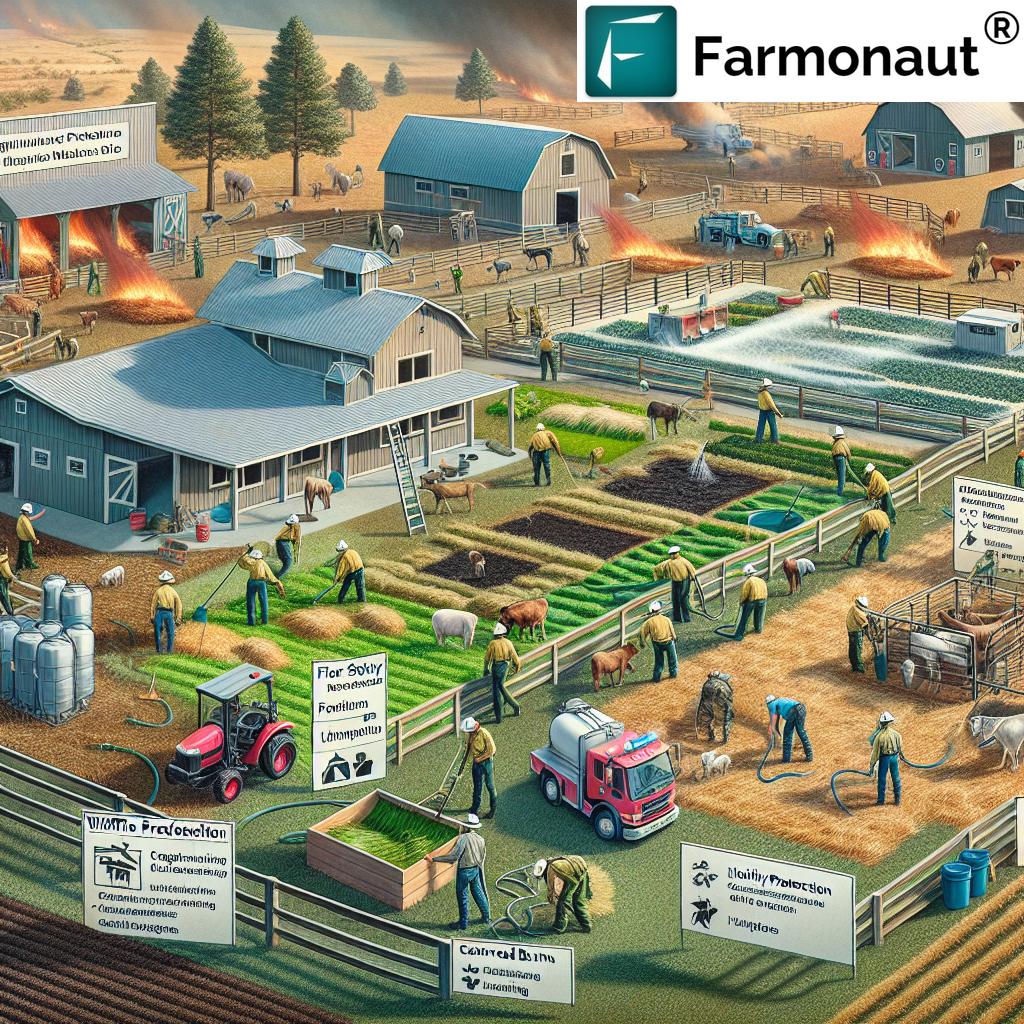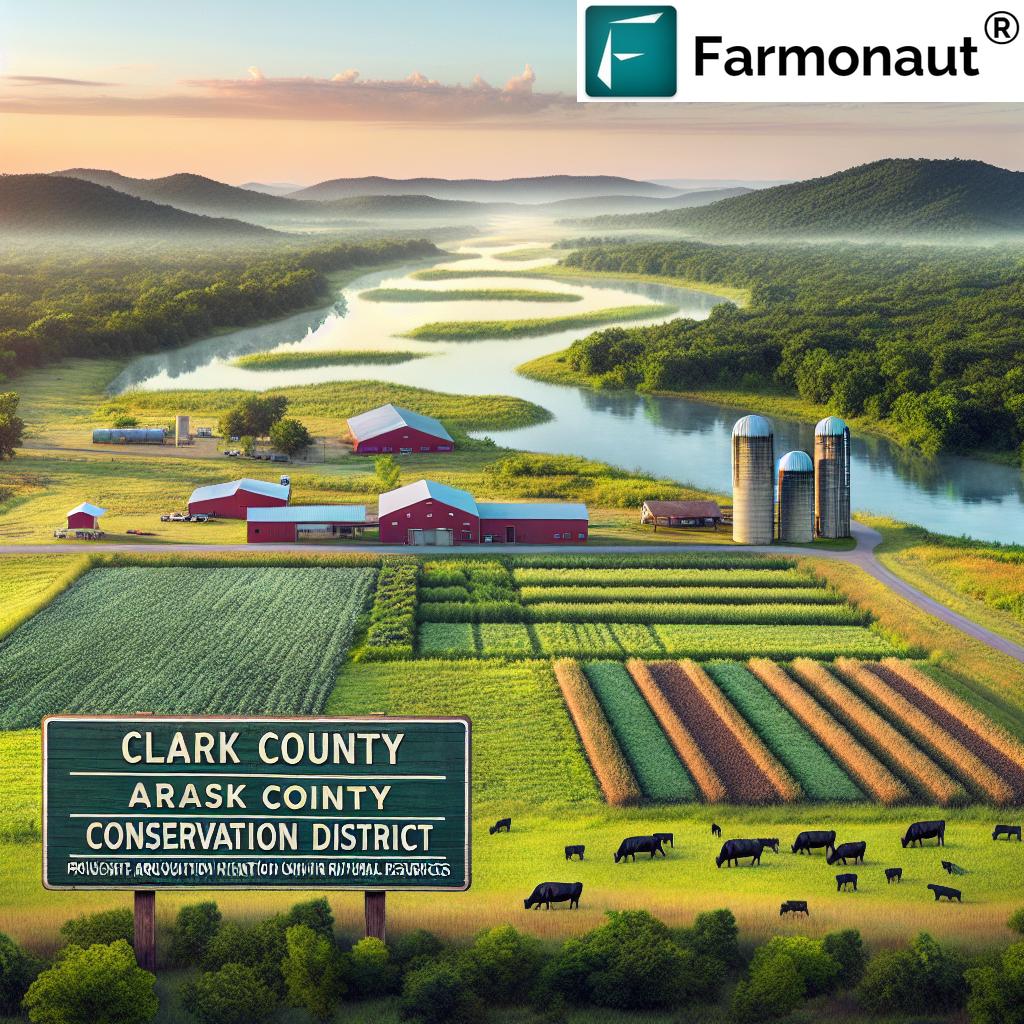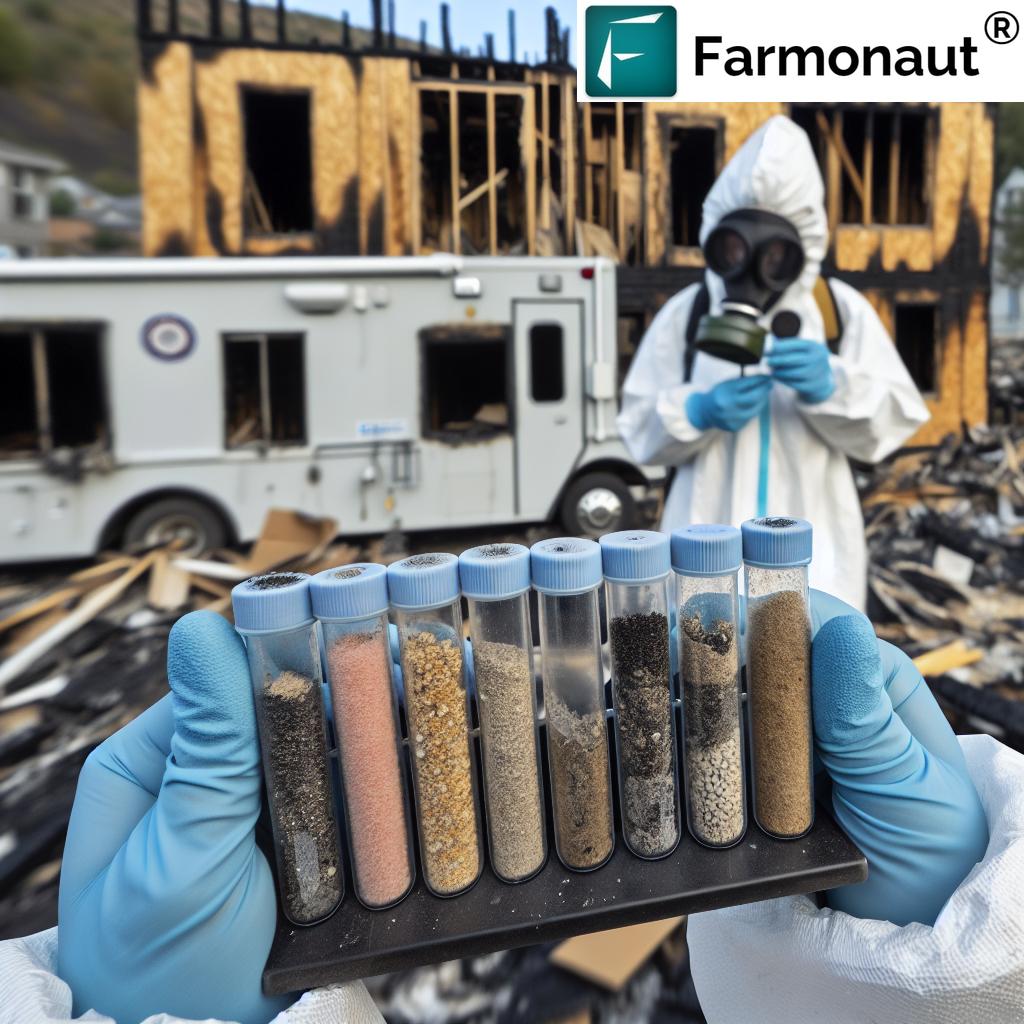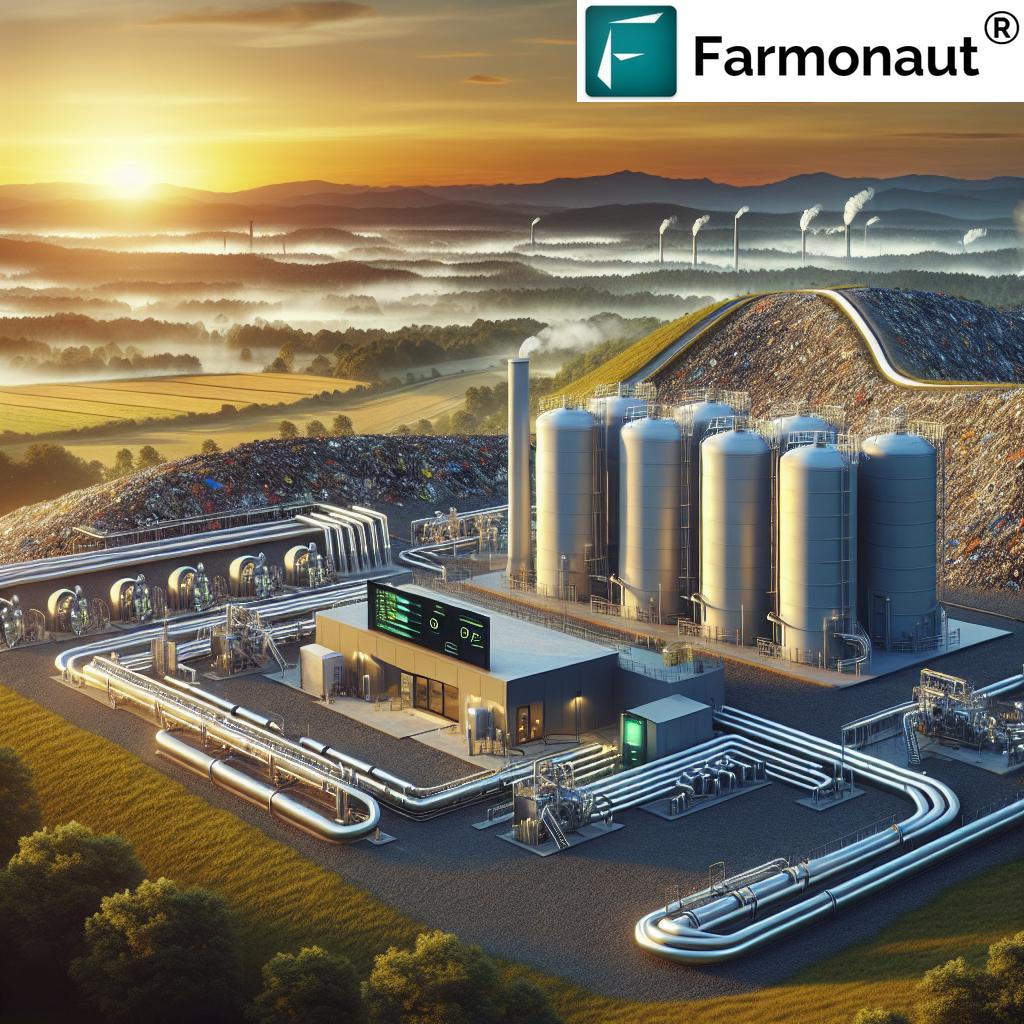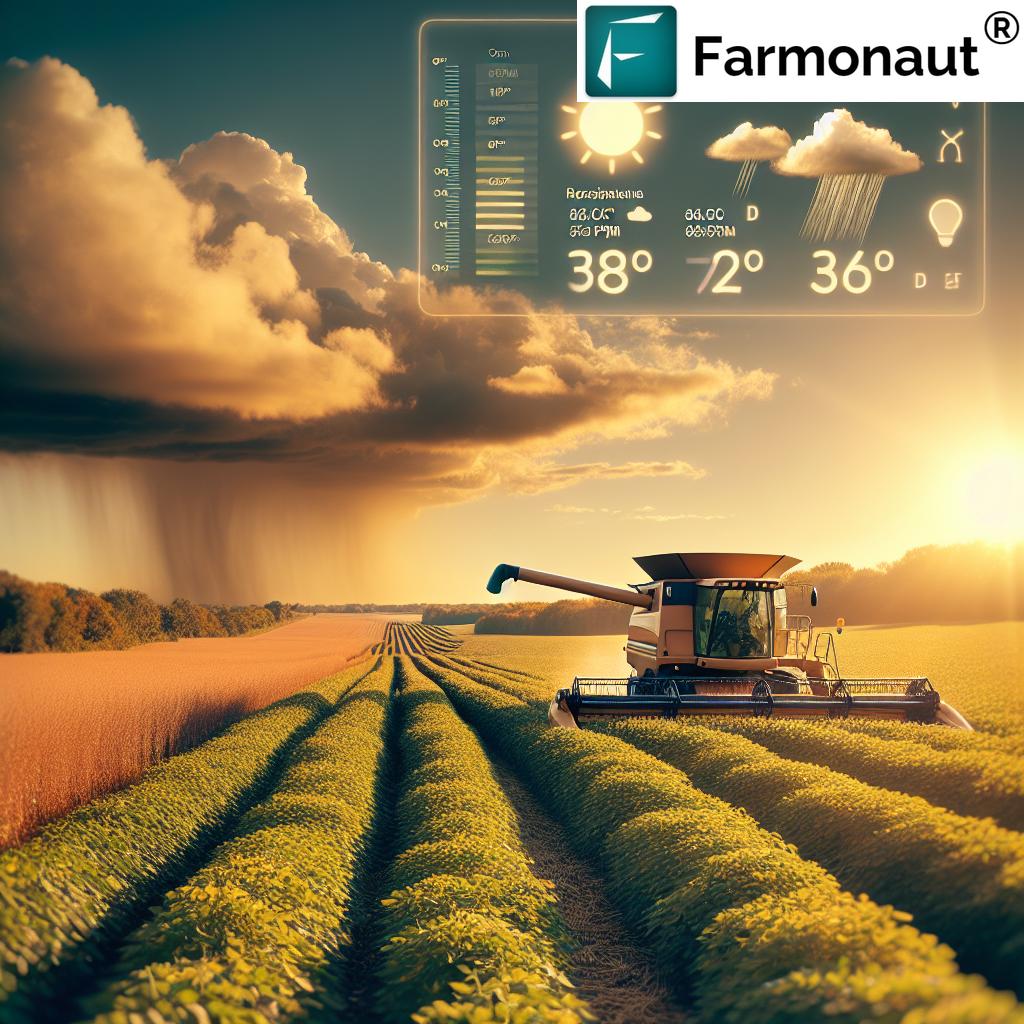Private Wildfire Protection: 7 Strategies for Californians
Table of Contents
- Understanding the Wildfire Threat to California’s Agriculture and Forestry
- Private Wildfire Protection: 7 Key Strategies for California Landowners
- 1. Creating Defensible Space for Landowners
- 2. Fire-Resistant Landscaping & Materials
- 3. Controlled Burns for Wildfire Risk
- 4. Firebreaks in Forestry and Fuel Breaks
- 5. Water Supply Management & Firefighting Readiness
- 6. Equipment Maintenance and Safe Practices
- 7. Fire Safety Training, Education & Drills
- Comparison Table of Wildfire Protection Strategies
- Challenges in Implementing Private Wildfire Protection
- Collaborative Efforts, Public Programs & Partnerships
- Farmonaut: Precision Technology for Wildfire Mitigation & Sustainable Agriculture
- Policy and Legislative Considerations Supporting Wildfire Mitigation
- Frequently Asked Questions (FAQ)
- Conclusion: Building a Resilient, Sustainable Future for California Landowners
“Over 80% of California wildfires are influenced by land management practices like defensible space and controlled burns.”
As Californians, we understand the immense challenges that wildfires pose to our agriculture, farming, and forestry sectors. Year after year, these disasters threaten not just land, but also our livelihoods, resources, and the sustainability of our communities. Private wildfire protection isn’t just a buzzword—it’s a necessity. Effective strategies such as creating defensible space, implementing controlled burns, building firebreaks, and adopting innovative technologies are more important than ever before. In this comprehensive guide, we’ll explore the multifaceted approaches to wildfire risk reduction, especially for private landowners in California. We’ll also highlight cutting-edge solutions from Farmonaut, an agricultural technology platform bringing satellite-powered insights and precision tools to your fingertips.
Understanding the Wildfire Threat to California’s Agriculture and Forestry
Wildfires in California are a recurring threat to our agricultural lands, forests, and rural communities. Most of these fires originate from lightning strikes, human activities, or other natural causes. Once ignited, wildfires are fueled by dry conditions, high winds, and abundant vegetation.
- Economic Impact: The loss of valuable crops, livestock, and equipment creates significant financial setbacks for both farmers and ranchers. Recovery costs for lost infrastructure can range into the millions for large properties.
- Environmental Consequences: Fires degrade soil quality, destroy habitats, disrupt entire ecosystems, and threaten regional biodiversity.
- Safety Hazards: Farm workers, forestry personnel, and rural communities are at constant risk due to the unpredictable nature and rapid spread of wildfires.
Effective wildfire protection strategies are not only vital for safeguarding properties but also for enhancing the long-term sustainability of our regions. The key is to approach mitigation proactively and with the right set of tools tailored to local threats.
Did you know? Digital solutions like Farmonaut’s blockchain-based product traceability help maintain transparency and trust in the food supply chain, connecting wildfire-affected agriculture with end consumers through verified, tamper-proof data.
Private Wildfire Protection: 7 Key Strategies for California Landowners
Effective private wildfire protection means implementing a combination of the following strategies. By understanding, planning, and investing in these approaches, we can reduce wildfire risk, safeguard our agricultural assets, and ensure the resilience of both farm and forested lands:
- Creating Defensible Space
- Fire-Resistant Landscaping
- Controlled Burns
- Firebreaks & Fuel Breaks
- Water Supply Management
- Equipment Maintenance
- Fire Safety Training
1. Creating Defensible Space for Landowners
Defensible space for landowners is a critical buffer zone designed to reduce fire risk around properties, buildings, storage units, and infrastructure. This requires removing vegetation, pruning trees and shrubs, and eliminating combustible materials near structures.
- Zone 1 (0-30 feet): Remove all dead plants, grass, and weeds. Keep roofs and gutters clear of debris. Trim branches within 10 feet of any chimney or stovepipe outlet.
- Zone 2 (30-100 feet): Cut grass down to a maximum height of 4 inches. Create horizontal/vertical spacing between shrubs and trees by pruning regularly.
- Zone 3 (Beyond 100 feet): Thin trees/brush to reduce the density of plants and remove the ladder fuels that can help a fire climb into tree canopies.
The aim is to slow fire progression so that it loses intensity before reaching critical assets. Maintaining defensible space also improves access for firefighting personnel and equipment.
For detailed, satellite-based maps of vegetation and to guide your defensible space planning, check Farmonaut’s large scale farm management tool for real-time NDVI and vegetation health analytics.
2. Fire-Resistant Landscaping & Materials
Incorporating fire-resistant landscaping and materials into the area surrounding homes, barns, and vital infrastructure is another proactive step toward wildfire safety. Select plants with high moisture content and low resin or oil, such as succulents, ice plant, or certain native California species. Use rock, stone, or gravel mulch instead of highly-flammable wood chips or bark.
- Spacing: Arrange plants with adequate gaps to break up continuous areas of vegetation.
- Material Selection: Use fire-resistant materials for fences, decks, and garden borders (metal, stone, concrete).
- Maintenance: Remove dead vegetation, weeds, and leaves regularly, and irrigate where possible to keep plants less flammable.
- Benefit: Fire-resistant landscaping reduces the chance that wildfire embers or flames gain a path to structures, especially during high-wind fire events.
3. Controlled Burns for Wildfire Risk
Controlled burns (or prescribed burns) are planned fires set under monitored conditions to eliminate excess fuel–dead wood, leaves, and thick undergrowth–that would otherwise feed a wildfire. When executed by trained personnel and in compliance with legal regulations, prescribed burning is one of the most ecologically effective wildfire mitigation strategies.
- Benefits: Reduces the risk of large, uncontrollable fires by lessening the fuel load.
- Challenges: In California, liability concerns and the current absence of prescribed fire insurance make some landowners hesitant to implement controlled burns. Strict permits, planning, and adherence to weather/fire safety conditions are mandatory.
Tip: Stay updated on local guidelines and always coordinate with fire authorities before conducting a prescribed burn. Don’t overlook the insurance and liability aspects unique to states like California.
Want to integrate fire risk analytics and weather monitoring before planning a controlled burn?
Explore Farmonaut’s carbon footprint tracking to keep agricultural operations both sustainable and compliant.
4. Firebreaks in Forestry and Fuel Breaks
Firebreaks and fuel breaks are essential for halting or redirecting the spread of wildfires. By removing vegetation and creating wide, non-combustible paths through forests or farmland, we provide critical access for firefighters and prevent fire from jumping into flammable areas.
- Design: Firebreaks are typically strips of land cleared of combustible material, while fuel breaks are managed corridors where vegetation is thinned or replaced with fire-resistant species.
- Placement: Along property lines, between fields, on hillsides, and around key assets like barns or pens.
- Maintenance: Regular removal of regrowth and accumulated debris keeps firebreaks effective.
- Environmental Impact: Properly planned firebreaks can minimize habitat fragmentation and soil erosion while providing line of defense against fast-moving blazes.
For forest landowners, integrating firebreaks is an established practice—and evidence shows well-maintained breaks can reduce wildfire spread by up to 60% in agricultural and forest zones.
“Firebreaks can reduce wildfire spread by up to 60% in agricultural and forestry zones.”
5. Water Supply Management & Firefighting Readiness
Water is the most critical resource during an active wildfire. Private wildfire protection includes ensuring we have adequate water supply available for firefighting. Wells, ponds, reservoirs, and storage tanks should be located strategically for easy access.
- Maintenance: Keep pumps, hoses, and hydrants in ready-to-use condition. Regularly check for blockages and clear all debris away.
- Backup Solutions: Portable water tanks, irrigation systems designed for emergency fire response, and even water tenders if the site is remote.
- Firefighting Accessibility: Create and maintain wide, all-weather access roads or tracks to all water sources for emergency vehicles.
- Benefit: A robust water management strategy can enhance local response and dramatically increase survival rates for both crops and livestock during a wildfire event.
Looking to optimize water consumption and irrigation? Farmonaut’s large scale farm management solutions provide real-time analytics on water use and soil moisture, empowering landowners to enhance efficiency and boost drought resilience.
6. Equipment Maintenance and Safe Practices
Equipment is essential for agricultural productivity but also poses ignition hazards during the dry season. Proper maintenance routines can reduce wildfire risk and enhance rural safety.
- Regular Inspection: Check for engine leaks, damaged parts, and overheating. Replace worn-out parts to avoid friction and sparks.
- Operational Caution: Avoid using equipment on extremely dry or windy days. Refrain from welding or grinding near combustible materials.
- Parking: Never park vehicles or machines on dry grass.
- Debris Management: Keep work and storage areas clear of weeds and leftover plant matter.
Safety note: Equip machinery and vehicles with fire extinguishers, and train all personnel in rapid response protocols for hotspots or accidental fires.
Interested in monitoring and managing your entire fleet for risk reduction and efficiency?
Farmonaut offers cost-saving satellite-based fleet and resource management solutions.
7. Fire Safety Training, Education & Drills
Ongoing fire safety training is vital. By educating farm workers and forestry personnel on emergency plans, evacuation routes, equipment use, and rapid reporting, we can mitigate risks long before a disaster strikes.
- Drills: Conduct regular fire drills for all personnel, updating them as land/vegetation management plans evolve.
- Local Collaboration: Connect with local fire departments for training resources and to ensure authorities are familiar with your property layout.
- Documentation: Develop checklists and quick-reference guides for various wildfire scenarios.
Proactive education is proven to increase the effectiveness of both private and community-wide wildfire response.
For digital record keeping of staff training and on-site hazards, explore sustainable data management benefits in Farmonaut’s advisory module.
Comparison Table of Wildfire Protection Strategies
| Strategy Name | Description | Estimated Effectiveness (%) | Estimated Cost ($/Acre) | Environmental Impact | Suitable for Agriculture | Suitable for Forestry |
|---|---|---|---|---|---|---|
| Defensible Space | Clears, prunes, and maintains vegetation to create buffer zones | 70-90 | $150–$400 | Low | Yes | Yes |
| Controlled Burns | Planned burns to reduce fuel and undergrowth | 60-85 | $30–$150 | Medium | Yes* | Yes |
| Firebreaks | Vegetation gaps or non-combustible corridors | 60-80 | $100–$500 | Low-Medium | Yes | Yes |
| Fire-Resistant Crops | Planting less flammable, high-moisture crops in risk zones | 30-50 | $50–$300 | Low | Yes | No |
| Grazing Management | Targeted livestock grazing to reduce fine fuels | 40-70 | $20–$100 | Low | Yes | Yes |
| Community Fire Plans | Joint planning, education, coordinated response | 60-90 | Varies | Low | Yes | Yes |
| Vegetation Management | Thinning, mowing, or clearing brush and trees | 55-80 | $60–$400 | Medium | Yes | Yes |
* Controlled burns may be unavailable to private landowners in parts of California due to liability constraints and lack of prescribed fire insurance.
Challenges in Implementing Private Wildfire Protection in California
While the outlined measures are effective, landowners frequently encounter significant hurdles to implementation:
- Liability Concerns: In California, those conducting controlled burns may be held legally liable for damage or firefighting costs if a fire escapes, especially in the absence of prescribed fire insurance.
- Financial Constraints: The upfront and maintenance costs for firebreaks, equipment, or fire-resistant landscaping can be high, particularly for small and medium-sized farms.
- Lack of Access to Resources: Not all landowners have easy access to skilled firefighting personnel, tools, or technical expertise necessary for compliance.
- Knowledge Gaps: Remaining current on the latest best practices and evolving regulations for wildfire mitigation is a continuous challenge.
Digital farm management tools like Farmonaut can offset these hurdles with cost-effective, science-driven insights for risk reduction, real-time alerts, and precision planning at any scale.
Collaborative Efforts, Public Programs & Wildfire Protection in California
Addressing the full scope of wildfire protection in our state often requires partnership between private landowners, local organizations, and governing agencies.
- Fire Safe Councils: Many rural Californian communities form Fire Safe Councils to coordinate fire prevention, education, and evacuation planning. By participating, we build resilience at the community level.
- Cost-Share Programs: State and federal initiatives, such as those from the USDA Forest Service, offset costs for defensible space, firebreaks, and vegetation management projects.
- Public Guidance: Local fire departments and government agencies often provide free educational resources, checklists, and planning guides to help landowners navigate wildfire mitigation requirements.
Education, planning, and regular collaboration with these organizations amplifies the impact of individual efforts and ensures our response is both informed and effective.
Farmonaut: Precision Technology for Wildfire Mitigation & Sustainable Agriculture
Technology is a force multiplier in wildfire protection. As stewards of the land, we are always seeking affordable, accessible solutions to protect our assets and the environment. Farmonaut is at the forefront of this.
- Satellite-Based Crop & Vegetation Monitoring: Monitor live crop and forest health from your phone or browser using NDVI and other modern multispectral mapping indices—helping visualize fire risks, track drought, and plan defensible space.
- Jeevn AI Advisory System: Get automated, real-time, and farm-specific fire risk or extreme weather alerts, and sustainable crop management recommendations derived from advanced AI analysis.
- Blockchain Traceability: Traceability tools help protect product integrity and provide disaster-impacted supply chain transparency to buyers and regulators.
- Fleet Management: Fleet monitoring solutions drive efficient, safe machinery usage and lower operational wildfire risk.
- Carbon Footprint Monitoring: Track & reduce your carbon emissions for sustainable agricultural practices and eco compliance.
- Satellite Data APIs: Landowners, agribusinesses, and developers can integrate Farmonaut’s API for direct access to field-level weather, crop health, and fire risk datasets.
With Farmonaut, cost-effective wildfire prevention in agriculture and agricultural wildfire risk reduction becomes achievable for every Californian landowner. 
Flexibility for all:
Whether you steward a small vineyard, a ranch, timberland, or thousands of acres, Farmonaut’s scalable solutions can be deployed on Android, iOS, web, or integrated via API. See crop, plantation & forest advisory here.
Subscribing is easy!
Policy and Legislative Considerations Supporting Wildfire Mitigation
Sustainable wildfire mitigation strategies aren’t just about on-ground actions—they also depend on robust policies:
- Liability Reform & Insurance: California is actively reviewing new insurance models for prescribed fire and legal clarifications that could encourage safer controlled burns.
- Financial Incentives: Property tax reductions, grants, or low-interest loans for defensible space, fire-resistant improvements, and other prevention investments.
- Education & Outreach: Public agencies and NGOs continue to expand access to wildfire mitigation training, easy-to-use guides, and technical resources for landowners.
- Research & Data Sharing: Open data on fire spread, fuel moisture, and past wildfire impacts helps inform better private and public mitigation plans.
Together with evolving digital solutions, these approaches are reshaping fire prevention in agriculture and rural land management.
Frequently Asked Questions (FAQ): Private Wildfire Protection for California Landowners
Q: What is the most important first step for wildfire protection in California agriculture?
A: The most crucial step is creating defensible space—removing combustibles and reducing vegetation near structures. This action alone significantly lowers risk and meets most local fire codes for farm and forest properties.
Q: How do I decide between firebreaks and controlled burns on my land?
A: Both strategies are effective but serve different scenarios. Firebreaks are best for permanent barriers and quick defense. Controlled burns work for reducing heavy fuel in larger areas, but legal requirements and liability should be considered. Combining both is often optimal in high-risk locations.
Q: Are prescribed burns safe for private landowners?
A: When properly planned, equipped, and coordinated with authorities, prescribed burns can dramatically reduce wildfire risk. However, due to insurance and liability constraints in California, always follow local regulations.
Q: What financial support is available for wildfire mitigation on Californian farms?
A: There are federal and state cost-share programs to help landowners offset costs for defensible space, firebreaks, and related improvements.
Q: How can Farmonaut help me prepare for wildfire threats?
A: Farmonaut offers remote, satellite-powered monitoring of vegetation health, soil moisture, and potential fire risk zones—guiding optimal placement of firebreaks, controlled burns, and resource deployment with near real-time data. Explore the platform or API for custom solutions.
Q: Does fire-resistant landscaping really make a difference?
A: Absolutely. By using appropriate plants and materials, you block embers, prevent easy ignition paths, and give firefighters crucial time to protect structures in the event of a wildfire.
Conclusion: Building a Resilient, Sustainable Future for California Landowners
Safeguarding our farms, ranches, and forests against wildfire is a shared responsibility—one that combines science, stewardship, and strategic wildfire protection investments. By implementing these seven key wildfire mitigation strategies, staying current on liability/insurance matters, and using digital solutions for planning and monitoring, we can reduce wildfire risk, protect our economic and environmental resources, and support California’s agricultural sustainability for generations.
- Embrace defensible space, fire-resistant landscaping, and routine equipment maintenance as foundational tools on every rural property.
- Leverage technology like Farmonaut for data-driven resource management and actionable fire risk alerts.
- Pursue collaboration, education, and state-backed programs to enhance resilience at the individual and community levels.
With preparation, innovation, and the right partnerships, we—California’s landowners—can thrive despite wildfire threats. Every acre we protect today secures not just our income, but ensures environmental, agricultural, and rural community sustainability for tomorrow.
Ready to transform your wildfire protection practices? Explore Farmonaut’s platform today and join the growing community of Californian land managers driving sustainability and safety in agriculture and forestry.





